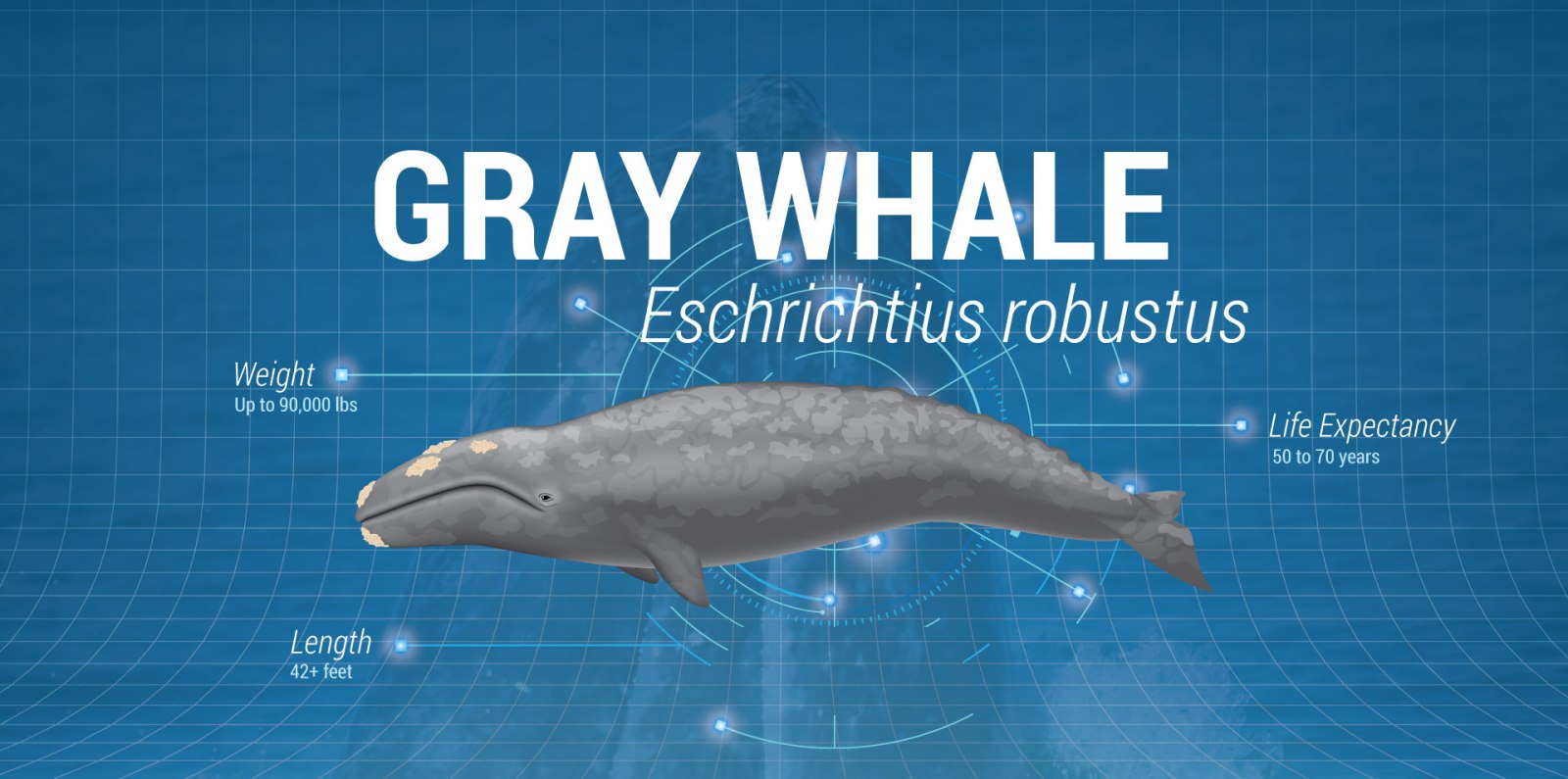GRAY WHALE


Once common throughout the Northern Hemisphere, gray whales are now only found in the North Pacific Ocean where there are two extant populations in the eastern and western North Pacific. Gray whales earned the nickname “devil fish” because of their aggressive reactions when harpooned. Commercial whaling rapidly brought both Pacific populations to near extinction. International conservation measures were enacted in the 1930s and 1940s to protect whales from over exploitation and in the mid-1980s the International Whaling Commission instituted a moratorium on commercial whaling.Gray whales make one of the longest annual migrations of any mammal, traveling about 10,000 miles round-trip.
PREY
They are primarily bottom feeders that consume a wide range of benthic (sea floor) and epibenthic (above the sea floor) invertebrates, such as amphipods. Gray whales suck sediment and food from the sea floor by rolling on their sides and swimming slowly along, filtering their food through 130 to 180 coarse baleen plates on each side of their upper jaw. In doing so, they often leave long trails of mud behind them and “feeding pits” in the sea floor.
PREDATORS
Killer whales prey upon gray whales.
THREATS
Gray whales are at high risk of becoming entangled in fishing gear, either swimming off with the gear attached or becoming anchored. Once entangled, whales may drag and swim with attached gear for long distances. This can result in fatigue, compromised feeding ability, or severe injury, which may ultimately lead to death. Collisions with all sizes and types of vessels are one of the primary threats to marine mammals, particularly large whales. Gray whales are one of the most vulnerable species to vessel strikes because they feed and migrate along the U.S. west coast, which has some of the world’s heaviest vessel traffic associated with some of the largest ports in the country.
(Information from NOAA Fisheries. fisheries.noaa.gov)
